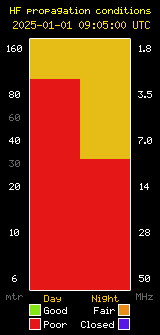
K6TZ Mesa Repeater Complex
Come to our March 18 Club meeting and hear about the forward upgrade plans for the hilltop repeater sites for the Mesa site and about our 220 MHz Repeater Site at Santa Ynez Peak. Matt Lechliter, W6KGB, will brief everyone about these upgrade plans. These upgrades are now underway and should be available for the users by mid-year.
How many of you have had the pleasure of meeting Jon Kent of the Santa Barbara Sheriff’s Aero Squadron? Jon holds the rank of Captain in that fine organization. Want to know why the Sheriff would want to get into a smaller aircraft and fly it over residential areas? Why would he fly it over forested areas? Maybe Jon can fill us in. At our meeting, Jon will be ably assisted by our own Bill Talanian, W1UUQ.
If you have no plans for dinner before the meeting, you might like to join Matt, Jon, Bill and us at Cody’s in the Turnpike Shopping Center at 5:30 PM.
We hold our Santa Barbara Amateur Radio Club meetings at the Goleta Union School District, 401 N. Fairview Ave. in Goleta, right across the street from the Goleta Library. Doors open at 7:00 PM and the meeting starts at 7:30 PM. Feel free to bring a guest! Join or renew your membership in SBARC while you’re there. Submitted by Darryl, KF6DI
Post expires at 11:40pm on Friday March 18th, 2016 but will still be available in the archives.






 Orville Beach, W6BI spoke at SBARC’s February General Club Meeting. Orville is a member of the Simi Settlers Amateur Radio Club of Simi Valley, Calif. who says he is now All Digital, All the Time! Orville spoke to the group about the success of digital mesh networking in Ventura County and encouraged Santa Barbara-area hams to join in the the fun of using 0ff-the-shelf wireless networking gear to create private IP networks using the exclusive ham allocation in the 2.4 GHz band.
Orville Beach, W6BI spoke at SBARC’s February General Club Meeting. Orville is a member of the Simi Settlers Amateur Radio Club of Simi Valley, Calif. who says he is now All Digital, All the Time! Orville spoke to the group about the success of digital mesh networking in Ventura County and encouraged Santa Barbara-area hams to join in the the fun of using 0ff-the-shelf wireless networking gear to create private IP networks using the exclusive ham allocation in the 2.4 GHz band.




